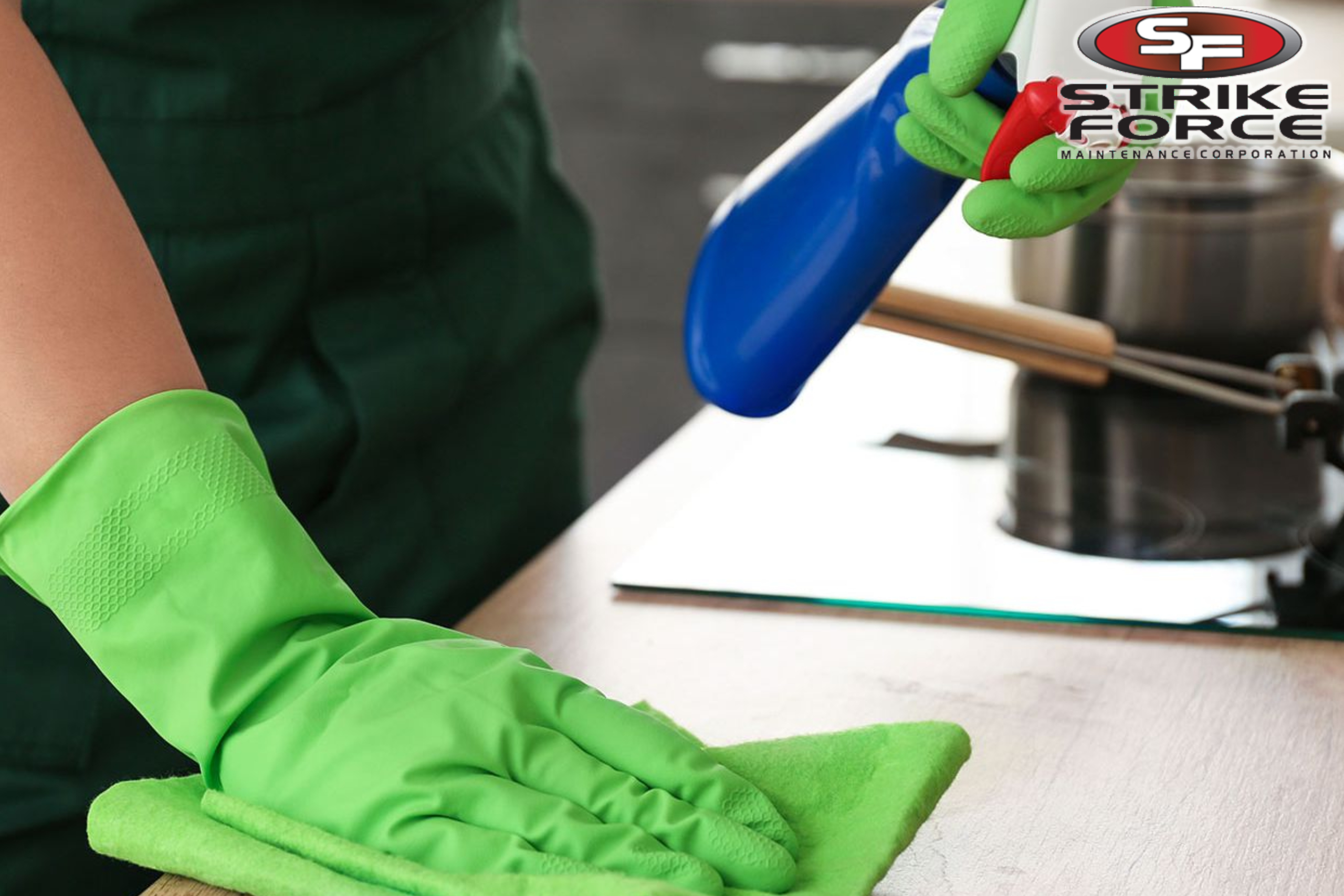
Preventing the Spread of Flu
By William Outcault
March 4th, 2020
Currently over 90,000+ people have been diagnosed with coronavirus in 83 countries including the USA. The virus is spread primarily person-to-person, between people who are in close contact or within six feet through fluids produced by coughs or sneezes. Cases are most prevalent with workers in healthcare or travelers. Aside from intuitive procedures to help prevent the spread of any flu outbreaks, (covering coughs and sneezes, staying home when sick, washing hands) in this article I would like to discuss steps you should take to help minimize any chances of spreading the illness.
Understanding Sanitizing, Disinfecting and Cleaning
Sanitizing surfaces reduces the overall amount of germs to a safe level which is done so by cleaning or disinfecting.
Removing germs, dirt and increasing the appearance of your work environment is done so by cleaning. Cleaning will not kill germs however it will physically remove germs from surfaces.
Disinfecting entails killing the germs on the surface. To do so you use chemicals which will in turn reduce risk of spreading the flu.
Prioritize Surfaces That Are Touched Often
Focus primarily on objects or surfaces that are touched in your daily routine. Some objects to be aware of:
Desks
Counter-tops
Doorknobs
Computer Keyboards
Faucet Handles
Phones
For some objects it maybe appropriate to use gloves to avoid contact with germs, spills, or any other fluids.
Create a Routine
You should clean a surface according to how frequently you are coming into contact with that surface. For the objects mentioned earlier, employees disregarding their job description, should do their part to diminish their risk and other’s risks of spreading the flu. However for a full disinfectant of your work-space it is normal to hire a service to come either weekly or monthly to do a thorough cleaning. Companies in healthcare, education or really any high-traffic buildings (especially if international customers/employees come and go) should frequently conduct a thorough disinfectant routine.
How to Perform Proper Disinfecting
Directions found on the labels of cleaning products are often clear and concise, however depending on the chemical and work-space, the proper procedures maybe obscure or difficult to perform safely.
Use any generic household cleaner to remove germs, following by a rinse with a water, and lastly use a EPA-registered disinfectant to then kill germs. The product should state that it is effective against influenza A virus. Some products can both clean and disinfect surfaces, however it is more effective to focus primarily on one of these tasks at a time. This maybe tedious but better safe than sorry.
Disinfecting surfaces also usually calls for the chemical to remain on the surface for a few minutes at a time, this plays a significant role in getting the full effectiveness out of the products. Be sure to carry disinfecting wipes for your electronic devices as they will need to be wiped down carefully and regularly, but also be aware of what electronic device you are wiping down as to not damage the item.
Safety First
After all, the whole point of these routines are to keep your coworkers safe. Take the time to read hazard warnings and double check directions. Depending on the disinfectant you should wear gloves and/or eye protection and don’t forget to wash your hands after using certain chemicals such as bleach.
Do not mix disinfectant and cleaners unless stated otherwise on the instructions label. Make sure your staff is aware of the safety routines in order to minimize any harm from the chemicals, which may require training before use of certain chemicals on certain surfaces.

